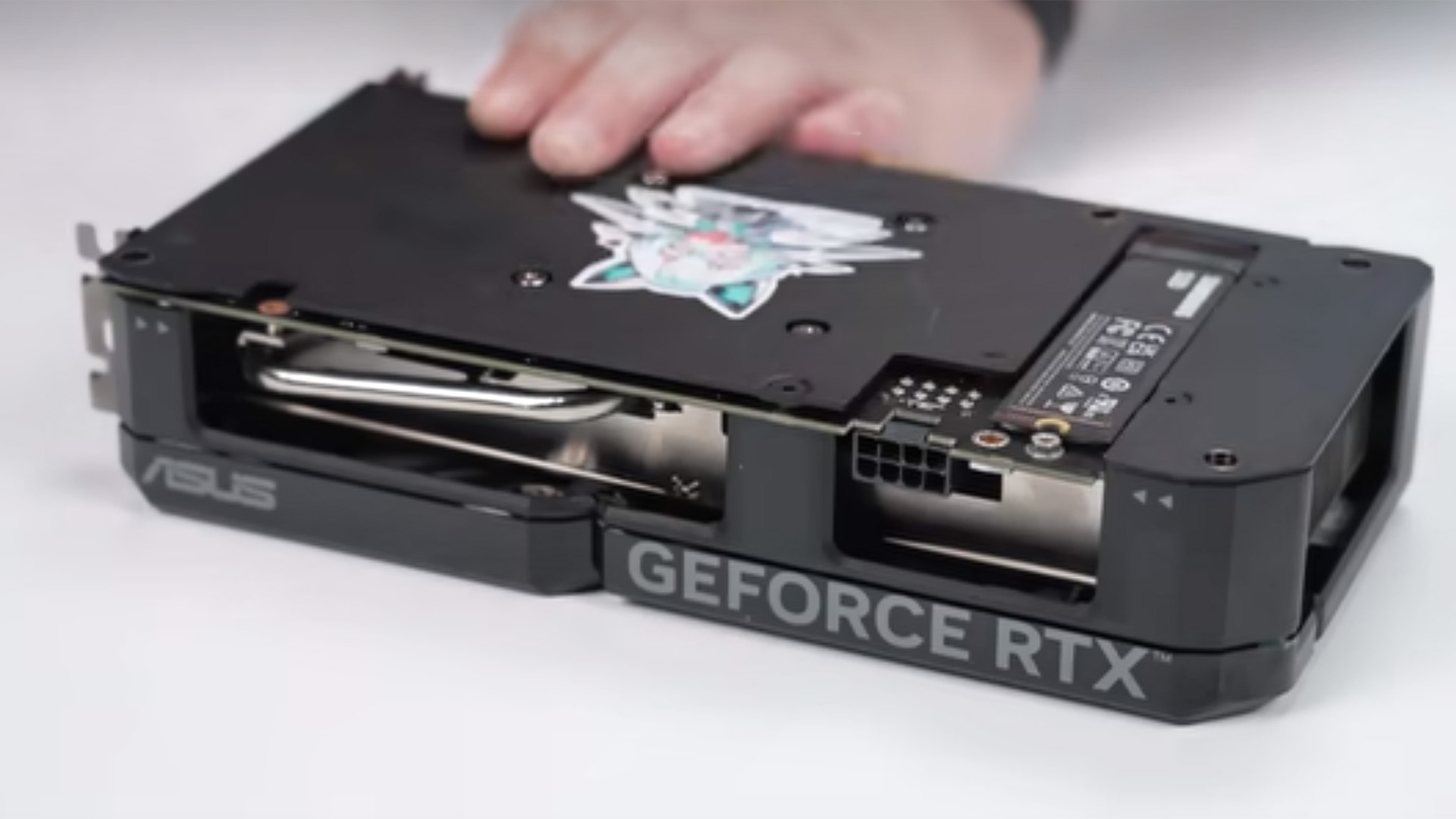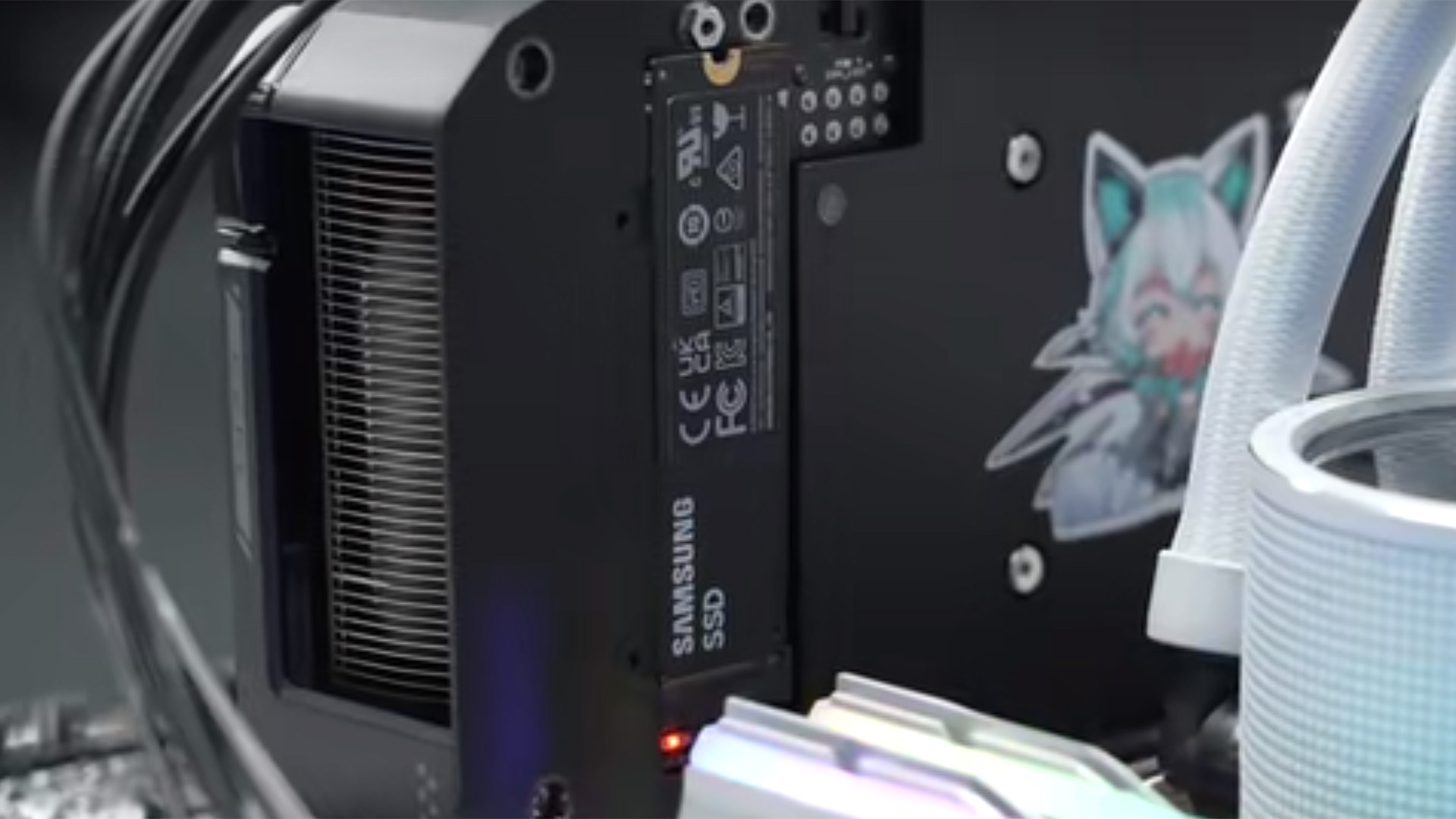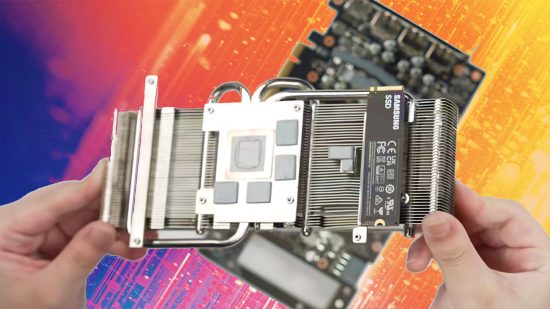Asus has shown off a novel prototype of a gaming graphics card with an M.2 slot on the back. In a video, Asus’ General Manager in China, Tony Yu, demonstrated the concept, which makes use of the spare PCIe 4 lanes left over when a graphics card only uses eight lanes in a 16x slot.
The card in the video is based on an entry-level Asus Dual card, based on the Nvidia GeForce RTX 4060 Ti, which only uses eight PCIe 4 lanes. There are other GPUs that only use eight PCIe lanes, though, including the new GeForce RTX 4060 and AMD Radeon RX 7600.
In the demonstration, which was spotted by Twitter user Olrak29_, Yu shows a 2TB Samsung 980 Pro SSD plugged into an M.2 slot on the back of the Asus Dual GeForce RTX 4060 Ti card, thanks to a cutout in the PCB. The demonstration also includes a run of CrystalDiskMark, in which the SSD hits a sustained sequential read speed of 6,854MB/s, compared to 6,911MB/s under a normal motherboard heatsink. You can see the full video below.
Does putting an SSD so close to a GPU present problems for thermals? Not according to Yu, who shows that the M.2 slot is positioned in a PCB cutout behind the heatsink fins, which enables it to get airflow from the graphics card’s cooler, to which it’s connected with thermal pads.
Yu then uses a thermal camera to show that the SSD is still running cool, and that in fact it only hits a maximum temperature of 43°C – that’s remarkable, when this drive hit a toasty temperature of 79°C during our own testing without a heatsink attached. The SSD doesn’t appear to require much power either, with the card still using the standard 8-pin PCIe power connector.

The video also shows that there’s potential for up to two PCIe 4 SSDs to be placed on such a graphics card, as they only need four lanes each. One of the benefits of such an approach is that the back of your graphics card is easily accessible when you open your PC case, unlike the slots on your motherboard, which often require you to remove your graphics card to access them, or to remove fiddly heatsinks with a screwdriver at the bottom of your case.

This isn’t the first time we’ve seen an M.2 SSD attached to a graphics card – AMD’s Radeon Pro SSG professional card did it back in 2016, but this is the first time we’ve seen it on a consumer graphics card. It reminds us a little bit of when ISA Sound Blaster sound cards used to come with an IDE controller for a CD-ROM drive in the 1990s.
If you’re looking to buy a new graphics card or SSD, then make sure you check out our full guides to the best gaming SSD, and the best graphics card, where we run you through all the best options at a range of prices. At the moment, the GeForce RTX 4070 is one of our favorite options, particularly the Asus Dual model we tested.
Would you be interested in running an SSD on your graphics card, rather than your motherboard? Let us know your thoughts on the Custom PC Facebook page, via Twitter, or join our Custom PC and Gaming Setup Facebook group and tap into the knowledge of our 390,000+ members.
